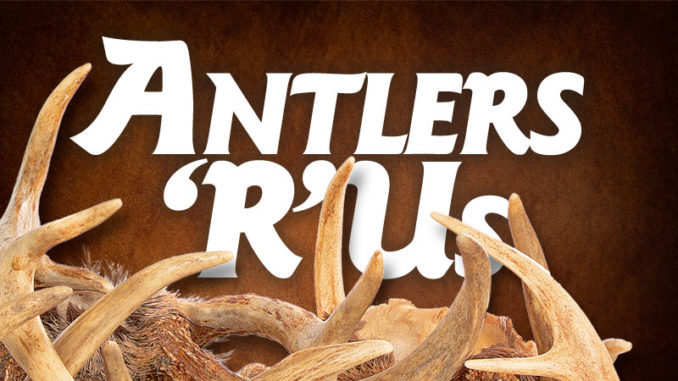
This taxidermist has learned plenty about deer hunting from his successful customers.
It’s every deer hunter’s dream, to be surrounded by big bucks, staring them right in the eyes.
It’s heart-pounding, looking at not just a trophy of a lifetime, but dozens of them. No, make that hundreds of them.
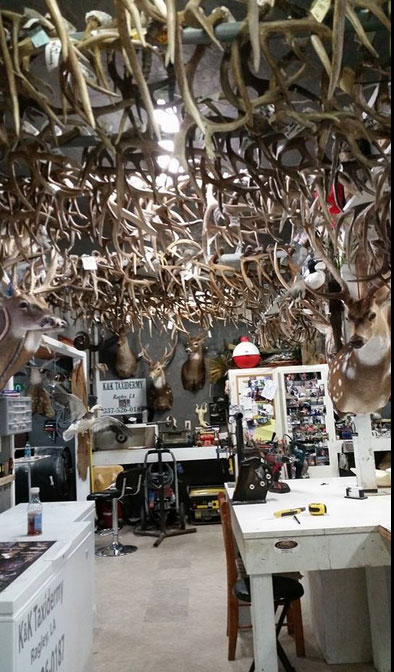
Fortunately for Chancy Lee Frith, he gets to live that dream every day, and he’s not even in the woods. He’s in the main shop at K&K Taxidermy in Ragley, a small city an hour north of Lake Charles. Frith takes in around 450 trophy deer to mount every year, and last year, that number climbed to 550. That keeps him and his family, plus five full-time employees, busy year-round.
Also, Frith loves to hunt deer himself, and that sometimes makes it tough. As folks bring in their trophies, he can’t help but think about the big ones he is seeing on his lease in Louisiana and his family land that borders the Homochitto National Forest north of Woodville, Miss.
“Oh yes, that’s pretty tough,” he said, “but taking care of our customers always come first. One of the worst cases for me was a couple of years ago; I was after a big 10-point on our lease pretty heavy. I had daylight deer-cam pictures of him and was ready to take him, but I couldn’t slip off. The next day, another hunter on our lease came to the shop and told me to come outside and see what he had. It was the big 10-point. I was happy for him, but not for me. I did get to mount him, but that’s tough when it’s one I wanted so badly.”
Frith not only has his own personal knowledge of deer hunting, but he also gleans information from the hundreds of hunters who bring him their trophies. From that, he’s come up with some things that can help any hunter be more successful.
“You can find big deer almost anywhere, but to be consistent, I guess the most important thing about finding trophy bucks is management,” Frith said. “Two of my regular repeat customers are Trent and Erica Buxton; I’ve learned so much from them. They always come in and show us pictures of 2- and 3-year-old deer they are watching grow. As they get older, they even give them names. When you keep up with deer like that until they are late 4- or 5-year-old deer, you are going to have some good ones. Throw in minerals and food plots, and you’ve got consistent big bucks to hunt.”
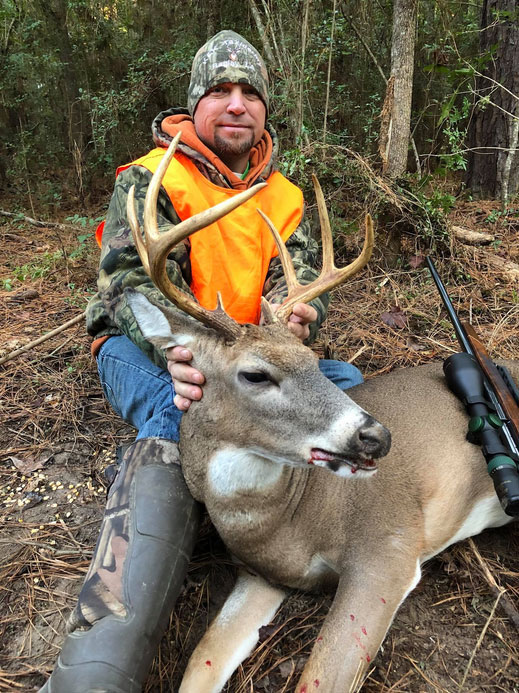
Frith is also a big believer in trail cameras.
“Some people don’t use them, but trail cameras can give you so much information, like what trails deer are using, what time they are in certain areas and how many bucks and does are using that area,” he said. “It’s especially important when your time in the woods is limited.”
The other major factor that determines success on big bucks is the rut.
“If there is a time you can target big bucks during the season, when you have a good shot at seeing one during daylight hours, it’s the rut,” Frith said. “Look, deer move around fairly freely, but when the first week of bow season hits and the activity in the woods picks up, those deer go nocturnal again — especially older, wiser bucks.
“The one time when you can get them to slip out during daylight after that is when the rut is on and they are chasing does. Keeping up with the rut is about as important a thing as you can do.”
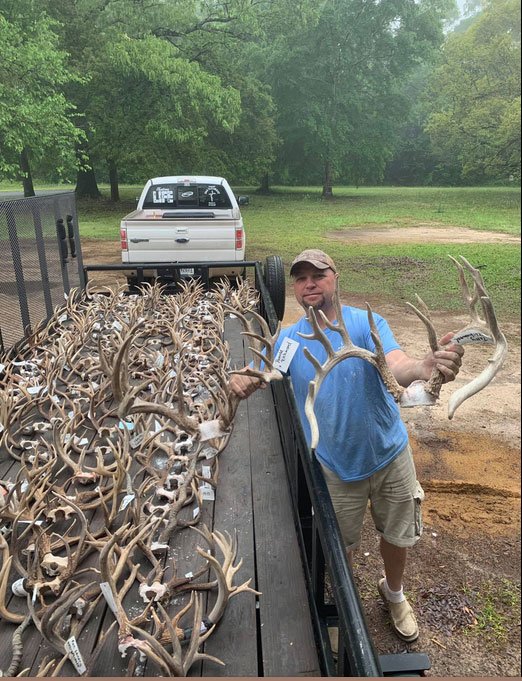
Frith said many deer hunters even schedule vacation during the rut; it shows in his business. About half of the big deer that come into his shop arrive during the rut. The good thing is, if you hunt in more than one area, you can catch the rut more than once.
“The rut down here where I live is usually late October and on up into November through Thanksgiving,” he said. “When it slacks off here, we can go up into Mississippi, and the rut there is mostly December and sometimes up into January. Within a half-day drive in several directions, you can find deer rutting activity in different places at different times.”
Learning from others is also important. It has been key to success in business and in hunting for Frith.
“My dad had to work a lot and didn’t get to hunt much, but my uncle Johnny taught me all about deer hunting when I was 15 years old,” Frith said. “He taught me everything I knew about deer hunting.
“The same thing happened when we got into the taxidermy business. I was working construction and fighting a jackhammer all day. My wife, Melanie, and I wanted to have our own taxidermy business. We were honestly a bit scared when we saw how much went into it, but a federal game warden in the area who did taxidermy on the side took time to teach us how to do it right. After about a year of helping him, he told us to get some business cards, that we were ready to go out on our own. It’s been a blessing from God to be able to do this and to meet and work with so many fine people and make sure their outdoor trophies are prepared the right way at a reasonable cost. Our son works with us today, and one day it will be his to continue.”
Don’t ‘short-cape’ your trophy buck
Too much is better than not enough. That applies to a lot of good things in life, and one of them is preparing your trophy deer to take to the taxidermist.
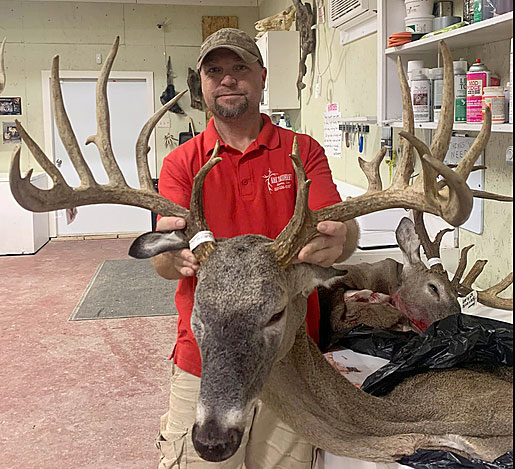
“One of the worst things you can possibly do when you have a trophy deer to be mounted is to not leave enough cape,” taxidermist Chancy Lee Frith said. “So many times, hunters cut the cape off short, and it makes us have to really stretch the skin to cover the form. Even worse, we have to order a smaller form, and the deer looks smaller. Nobody wants that.”
Most people skin their deer head down, hanging by the feet. When you do that, all the weight is hanging down and the deer is stretched tight. If you cut it too short, what looks like enough will slide up toward the head and not be enough. To be safe, he tells hunters to make a ring cut almost all the way back of where the stomach meets the hindquarter.
Rule No. 2 — or really 1A, according to Frith — is to keep your deer cool and covered. Letting the deer get hot makes some of the hair fall out. Letting direct sunlight hit it also deteriorates the quality of the hair and skin within a matter of hours, which both affect the best outcome of the mount.
Bucks along the big, muddy border
Louisiana and Mississippi share a common border — the mighty Mississippi River. They also share good numbers of big-racked deer.
But as a hunter who spends a considerable amount of time in the deer woods of both states, taxidermist Chancy Lee Frith said there are some pretty obvious differences in the way many hunters in the two states hunt.
Frith said one thing that is important in hunting two states is to keep up with all the different rules and regulations, especially specific ones for public lands.
Louisiana
Where we hunt here in Louisiana, Frith said, it is mostly around pine forests with a few hardwoods. The terrain is flat, and deer lay up in the thickets pretty much all day.
“The obvious things we look for are trails, scrapes and rubs. If you can find fresh tracks on the trails, obviously that’s a good place to hang your stand,” said Frith, who hunts a private lease in Beauregard Parish. “Hunting in the pine woods means you usually have to get pretty close to the deer, either getting a shot on a trail or where they cross a woods road.
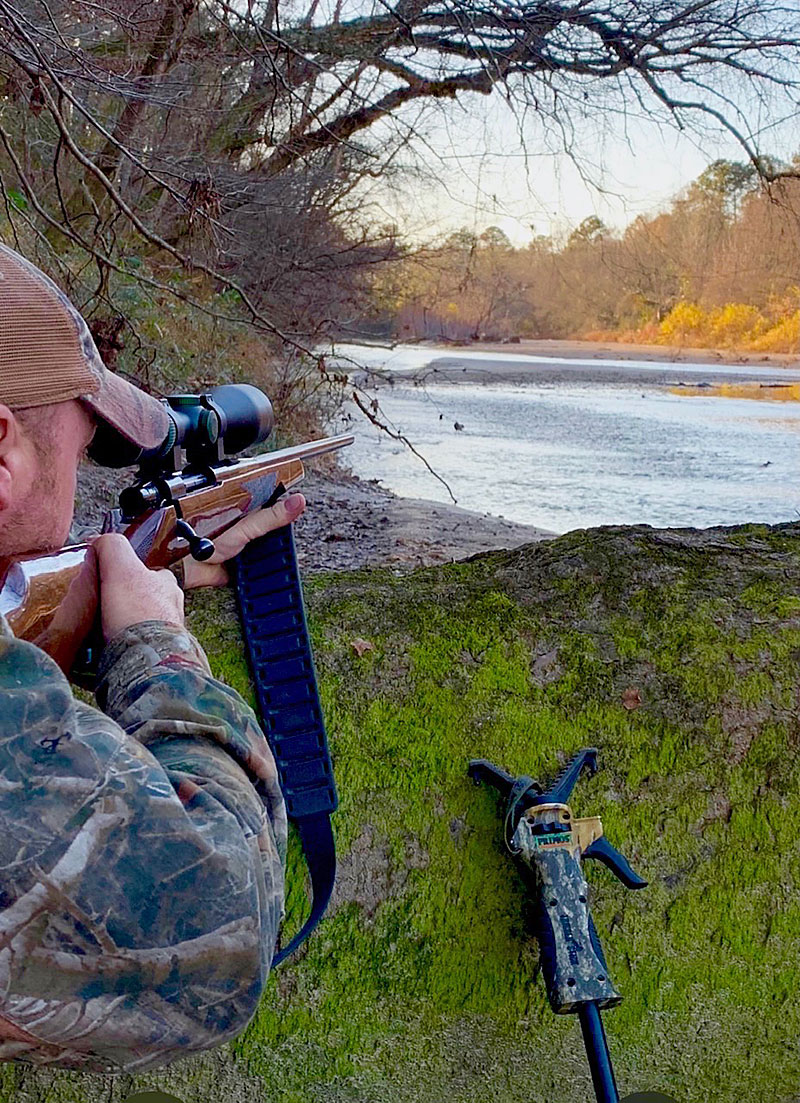
“This terrain also makes it a good place to hunt with a boy. The only shots long enough to require a gun are on the edge of clearings or cutovers, that sort of thing. Also, the rut in our part of Louisiana is pretty early, usually around the end of October into November.”
Mississippi
Frith said the terrain in Mississippi where he hunts is all hardwood ridges with lots of open ground and big winding creeks. The ridges offer a hunter the chance to sit with his or her back up against a big tree and see long distances below them, just like being in a big stand.
“When we say ‘creek’ in Louisiana, it’s usually something you can walk across, but in Mississippi there are long, wide stretches of creek with sandbars and crystal-clear water. I love to target those,” he said. “The deer come out and cross those areas or just come to into the open there. It seems like the deer there move better and are a little bit more likely to move all day, not just at daylight and dark.”
Frith hunts there mostly with a rifle and has taken some deer out to 200 to 250 yards, especially on the edge of the creek. He said if you are doing that kind of hunting, make sure you gun is sighted in and you are prepared for that shot.
The Homochitto National Forest covers 191,839 acres; Frith hunts the national forest and family land that borders it. He said it’s amazing the number of big deer that you see moving in that area. The rut there is usually a bit later, around December and sometimes into January.


